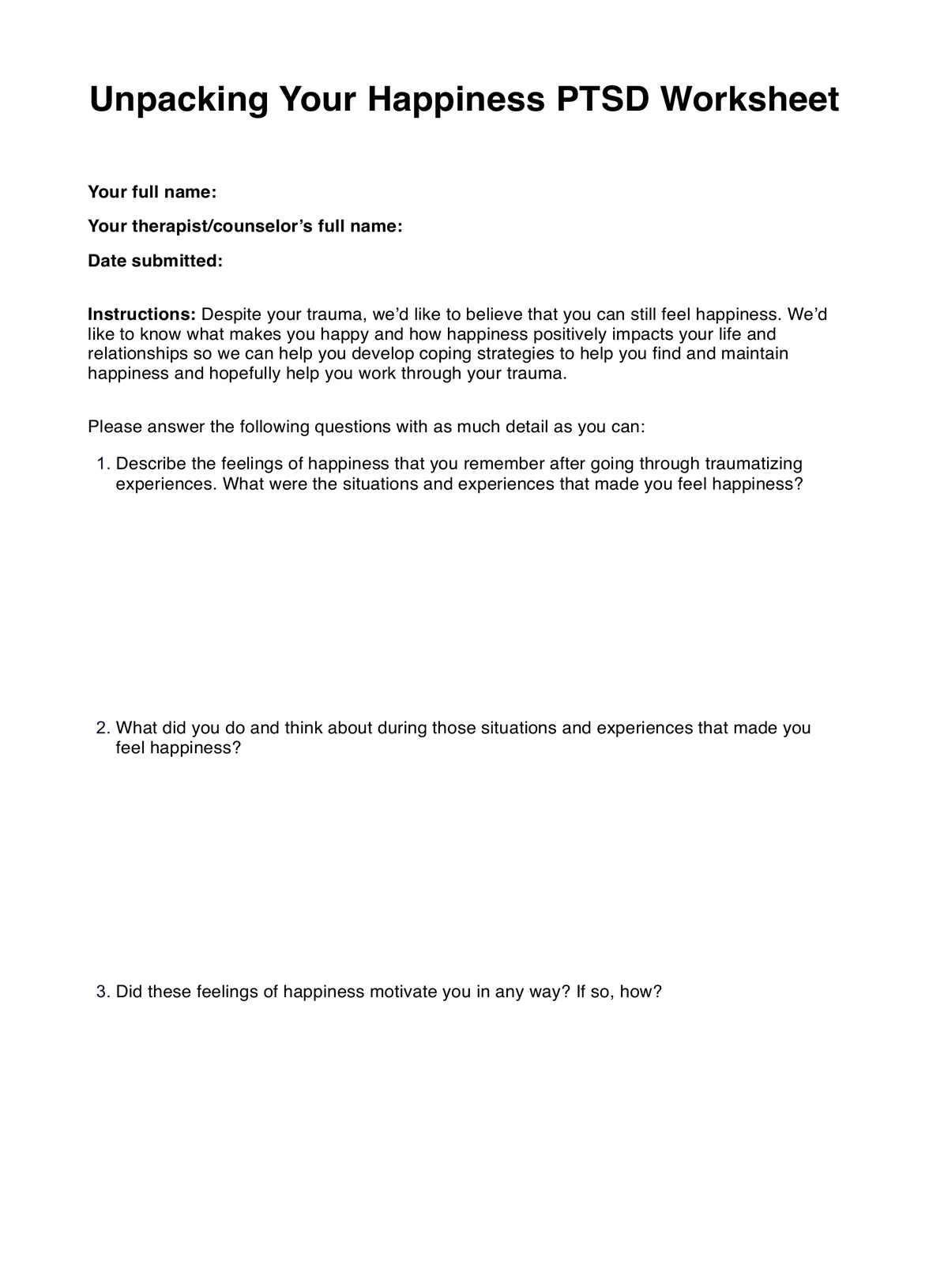This will depend on your patient. Giving them the time, space, and support to answer this is best because you treat them for trauma. That’s a touchy subject. But since this worksheet focuses on a positive emotion rather than a negative one, your patient might find it easier to answer than other worksheets. At the very least, it’s possible to accomplish this in ten minutes, assuming your patient doesn’t have to take too long to think and write about their happiness. Considering your therapy program, discussing the deadline with your patient is best.

Unpacking Your Happiness PTSD Worksheet
Assess your PTSD patient’s happiness using the Unpacking Your Happiness PTSD Worksheet.
Unpacking Your Happiness PTSD Worksheet Template
Commonly asked questions
Examining a patient’s negative emotions related to PTSD is essential because you will learn how their trauma and PTSD affect them negatively, including their relationships. However, hyper-focusing on negative emotions isn’t helpful and might even overwhelm your patients as they go through your therapy program.
By examining positive emotions, you can remind them that working past their trauma is possible. These positive emotions can serve as guiding lights to help them get to a better place. It’s also great for mental healthcare professionals because they can identify what instills their patients with positive emotions and build a care plan to help them feel positive emotions more often than negative ones.
Here are examples of PTSD worksheets that zoom in on positive emotions and feelings:
- Unpacking Your Empathy
- Unpacking Your Gratitude
- Unpacking Your Pride
We have templates for these worksheets! Check them out and add them to your roster of clinical resources!
EHR and practice management software
Get started for free
*No credit card required
Free
$0/usd
Unlimited clients
Telehealth
1GB of storage
Client portal text
Automated billing and online payments











